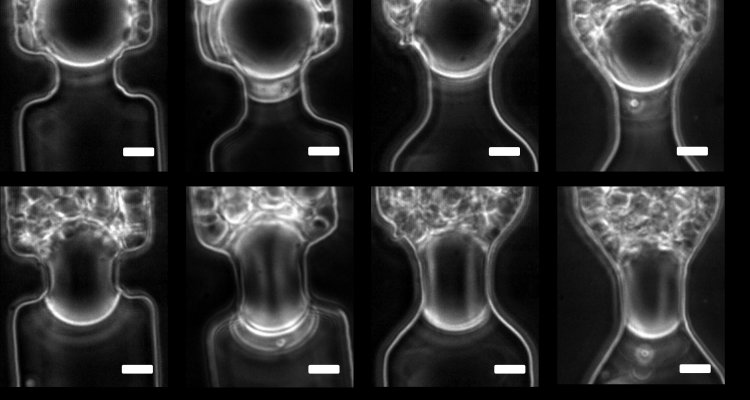
Project
Understanding filtration processes using microfluidic membranes
Within this new project, we first investigated in Ireland at large scale how milk can be processed into functional fractions, while aiming at improved nutritional profiles. The separation method of choice is membrane separation, which is a mild method for which relatively low amounts of energy are needed. Filtration processes ranging from microfiltration, ultrafiltration, nanofiltration, and reverse osmosis are all considered, were already tested at pilot scale.
In the next part of the project, we aim to achieve more understanding of the filtration processes by making use of microfluidic model systems. In the top image, you see a number of pores in parallel, and onto which particles have accumulated, thus clogging the pores, and hindering separation. Depending on the ratio of pore size to particle size, clogging will be quite different, either blocking the pore completely, or many particles being needed to form so-called bridges.
An aspect that until now has only been investigated very limitedly is the effect of deformability of components. In pioneering research done by Izabella Bouhid d’Aguiar at the time PhD candidate in our group, and currently post-doc in the membrane processes for food group at the university of Twente, it was found that such particles can be transferred through pores that are considerably smaller than the particle size. You can see this illustrated in the bottom part of the image, with a deformable particle approaching the pore, loosing volume, and deforming, to ultimately pass the pore.
These effects are also expected to occur when filtering milk, but to which extent this is the case, is not known. What is clear, is that if this is understood it will shed a completely new light on how to design membrane processes that currently revolve around a choice based on pore size. But from the images it is already clear that this would not do justice to the situation if deformable components are used. We will try to bridge this knowledge gap using various microfluidic structures, and particles. The project will run in conjunction with the membrane processes for food group in Twente.